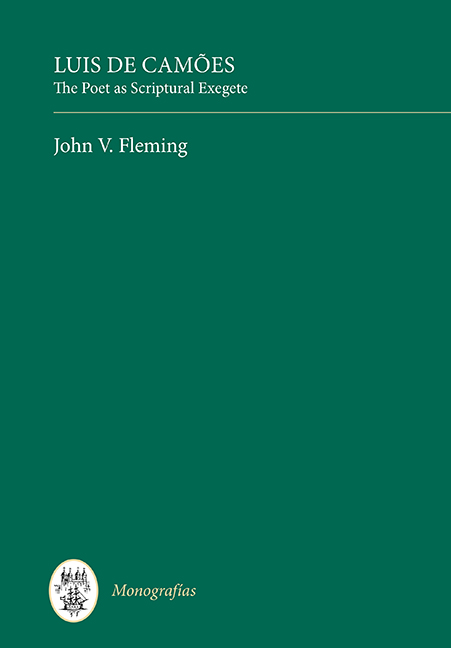7 - Palinode
Published online by Cambridge University Press: 15 September 2017
Summary
George Herbert, a great religious poet and a near contemporary of Luís de Camões, wrote a well-known poem called “The Altar,” the typography for which, when artistically presented on the printed page, actually looks rather like an altar. It is, of course, not Herbert's spatial manipulation of his material that makes it such a good poem. “The Altar” has to earn its readers’ appreciation as all other poems do, on the basis of its intellectual aptness and its verbal felicity. But it can be said that the cleverness with which the poet has handled an external aspect of his construction, linking the form with the intellectual content, makes a good poem even better.
The “numerical” aspects of the construction of Sôbolos rios do not make it a good poem, but they nonetheless magnify its greatness. No one who reads Graça Moura and accepts even half of his claims will doubt that the poet expended a very great deal of thought and ingenuity on his plan, submitting to formal limitations and constraints as well as enabling certain desired possibilities as he did so. He exemplified that ancient Christian aesthetic idea that the human artist could, and so far as possible, should, imitate the creation of the Divine Artificer. Camões structured his poem in such a way as to allow the persistent reader intimations of a higher, an ideal, and permanent stability capable of redeeming the disasters and mudanças of all human life. What is the poem's spiritual trajectory, and what vivid realities do its shadows foreshadow?
Among the striking themes of Sôbolos rios is authorial regret, linked with an expression of emended intention. Viewed from the psycho-theological point of view, which is unquestionably one of the poem's perspectives, the theme is penance. From a secular and literary point of view, the posture is that of the palinode. As with so many aspects of this poem, Camões approaches the subject in a fashion that combines brilliant originality with deference to long-established tradition. In this chapter I propose to examine the aspect of palinode in Sôbolos rios from several points of view.
- Type
- Chapter
- Information
- Luis de CamõesThe Poet as Scriptural Exegete, pp. 155 - 182Publisher: Boydell & BrewerPrint publication year: 2017



